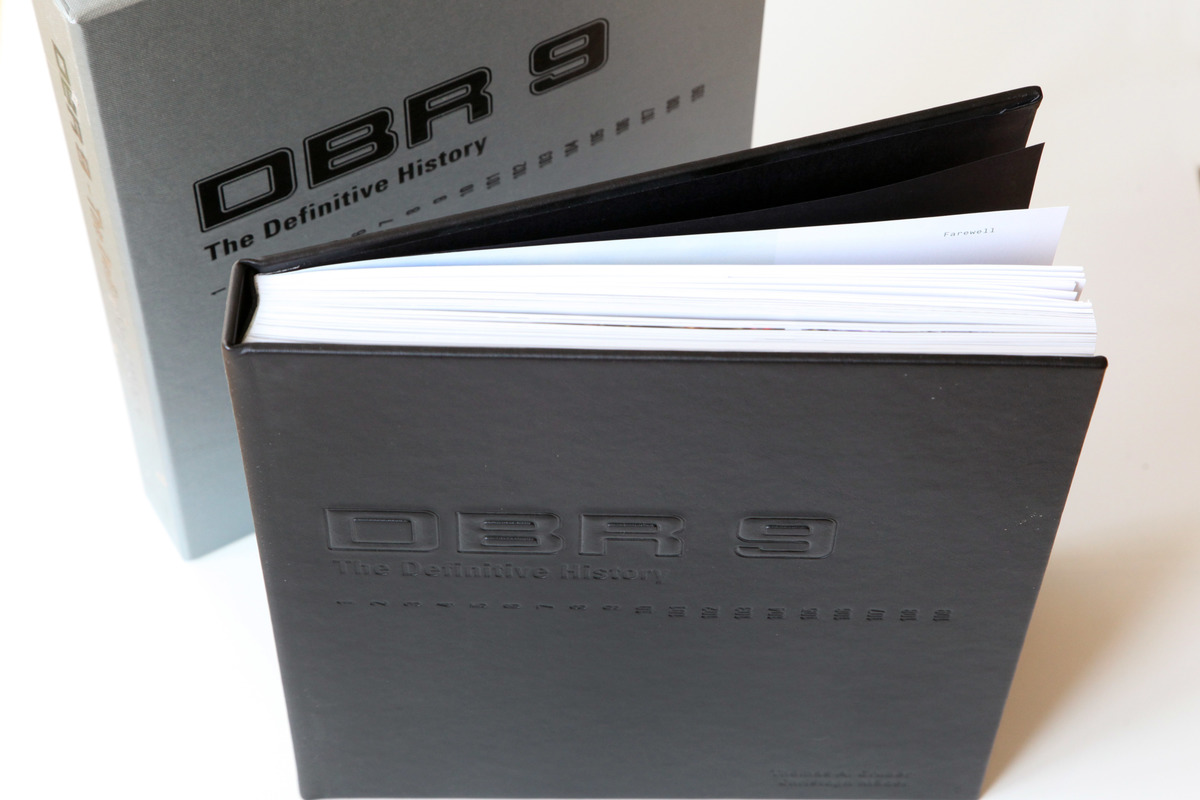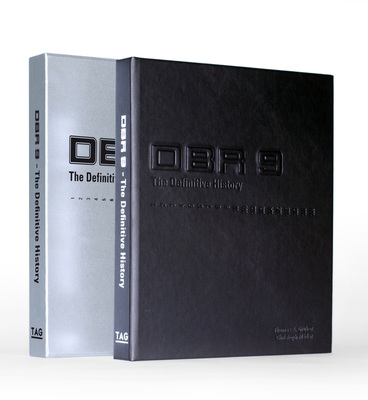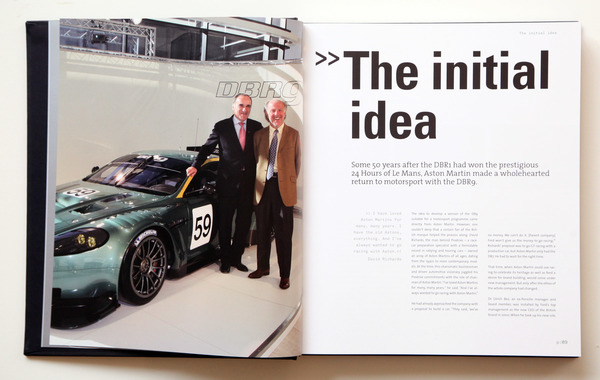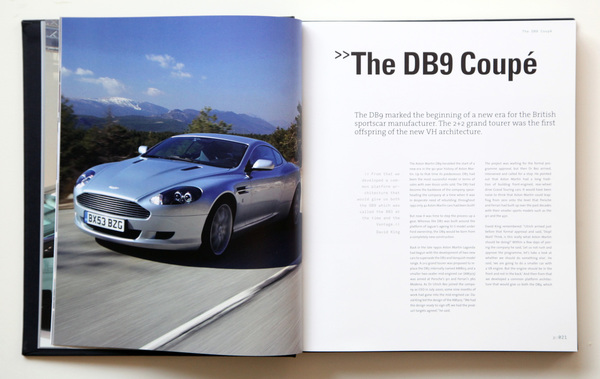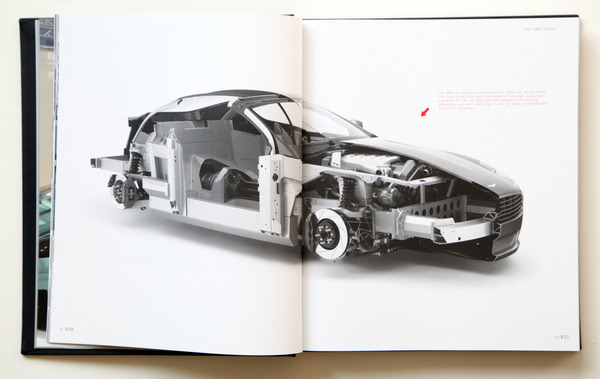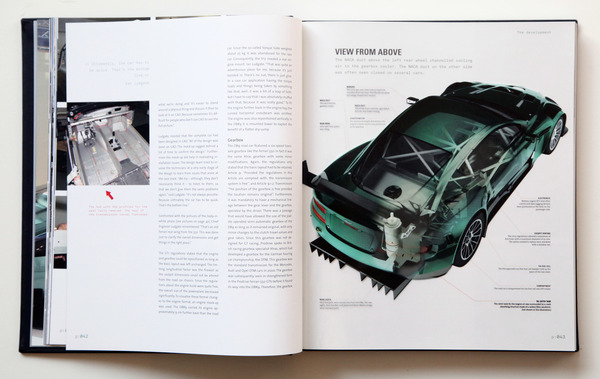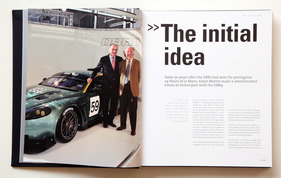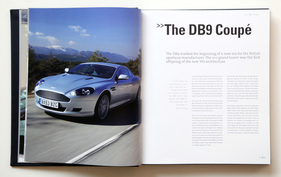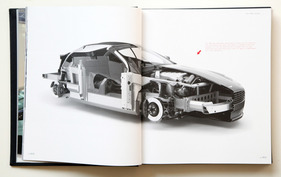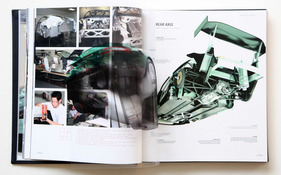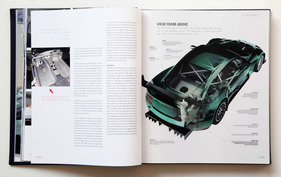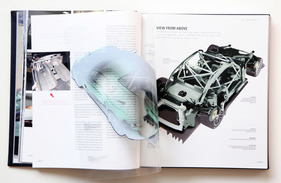No, the Aston Martin DBR9 is far from being a classic car, not even a youngtimer. However, it is certainly a neo-classic, just like its production counterpart, the DB9. The book on the DBR9 is no longer brand new, but has now been significantly reduced in price. It documents the development of the racing car down to the last detail, and future owners and fans will be grateful for it. Many an enthusiast and fan of a rare car from the sixties or seventies would be delighted to hold such a work about their car in their hands. And who knows whether the source documents on which the book is based, e.g. the transmission manual for the Xtrac 379, will still be available in 20 or 30 years' time.
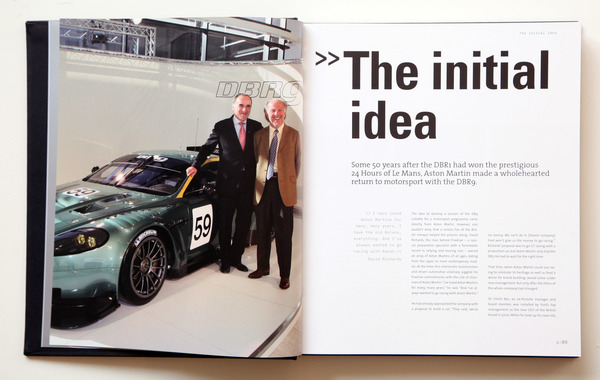
However, the authors Christoph Mäder and Thomas Gruber have secured all the information and preserved the results of interviews with over 30 people for eternity.
From the production car ...
The basis for the Aston Martin DBR 9 was of course the DB9 coupé, built between 2004 and 2016. The DB9 is certainly one of the most elegant Granturismo coupés of the new century and its V12 engine exuded luxury and sporty music at the same time.
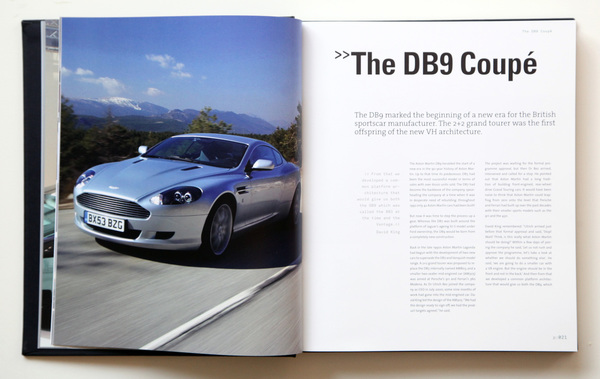
It was not necessarily obvious that a racing car could be developed from it.
... to the racing car
And yet it happened. And Mäder and Gruber provide an extremely comprehensive account of what it took to achieve this in almost 100 large-format pages. They also use aids such as semi-transparent printed films to show the car and what is hidden underneath.
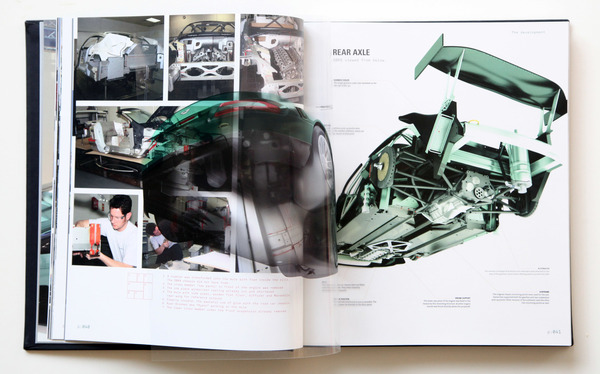
The original 3D data from the CAD system was used to create the illustrations. Hardly ever before has a car been documented so extensively.
Completely illuminated
Nothing remains hidden from the reader, neither the finesse of the technology nor that of the aerodynamics. The DBR9 was a highly developed racing car that demanded a great deal from its drivers, but ultimately rewarded them with success.
Extensively documented
In addition to the development history, the racing results are of course also included. There is also plenty of space for the racing teams involved. Of course, there is also a list of the chassis numbers (19 DBR9s were built).
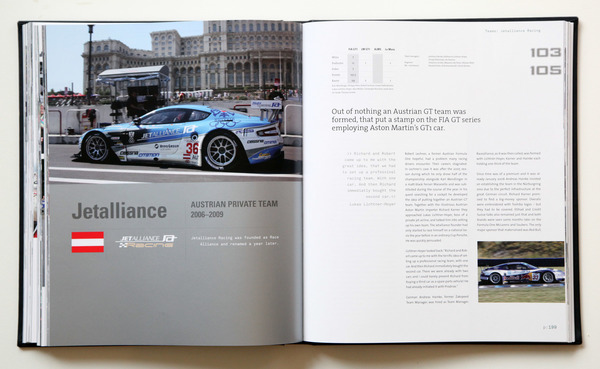
The book has a total of 296 pages and over 450 illustrations, in color of course, illustrate the English-language documentation.
For Aston facionados
2700 copies of the book "Aston Martin DBR9 - The Definite History" were printed, plus 270 limited Drivers Editions (with genuine leather cover). Many have of course already been sold, but some volumes of the standard edition are still available and are now being sold at the reduced price of EUR 195.00. This may sound like a lot, but you have rarely seen more facts and information density.
Of course, you have to be a fan of modern GT racing or an Aston Martin fan to make this investment. The work is less suitable as an "easy read" or as a picture book, because then you simply miss too much of what Mäder and Gruber have compiled.
Bibliographical information
- Titei: DBR9 - The Definite History
- Authors: Christoph Mäder and Thomas Gruber
- Language: English
- Publisher: T.A.G. Motor Books GmbH
- Edition: 1st edition November 2012
- Format: Hardcover, in slipcase, 28 x 33 cm
- Scope: 296 pages, 450 illustrations (in color)
- ISBN: 978-3-9818419-6-1
- Price: from EUR 195.00
- Buy/order: From the publisher T.A.G. Motor Books
